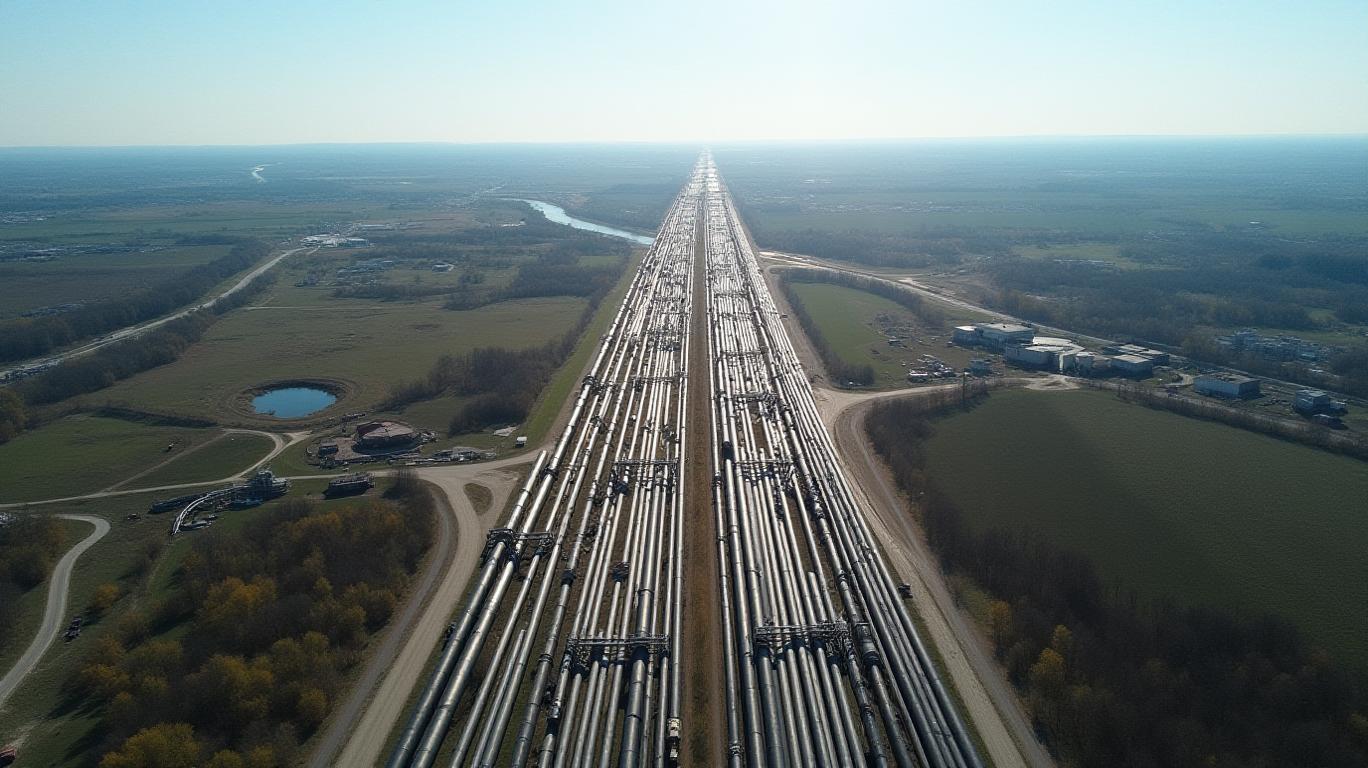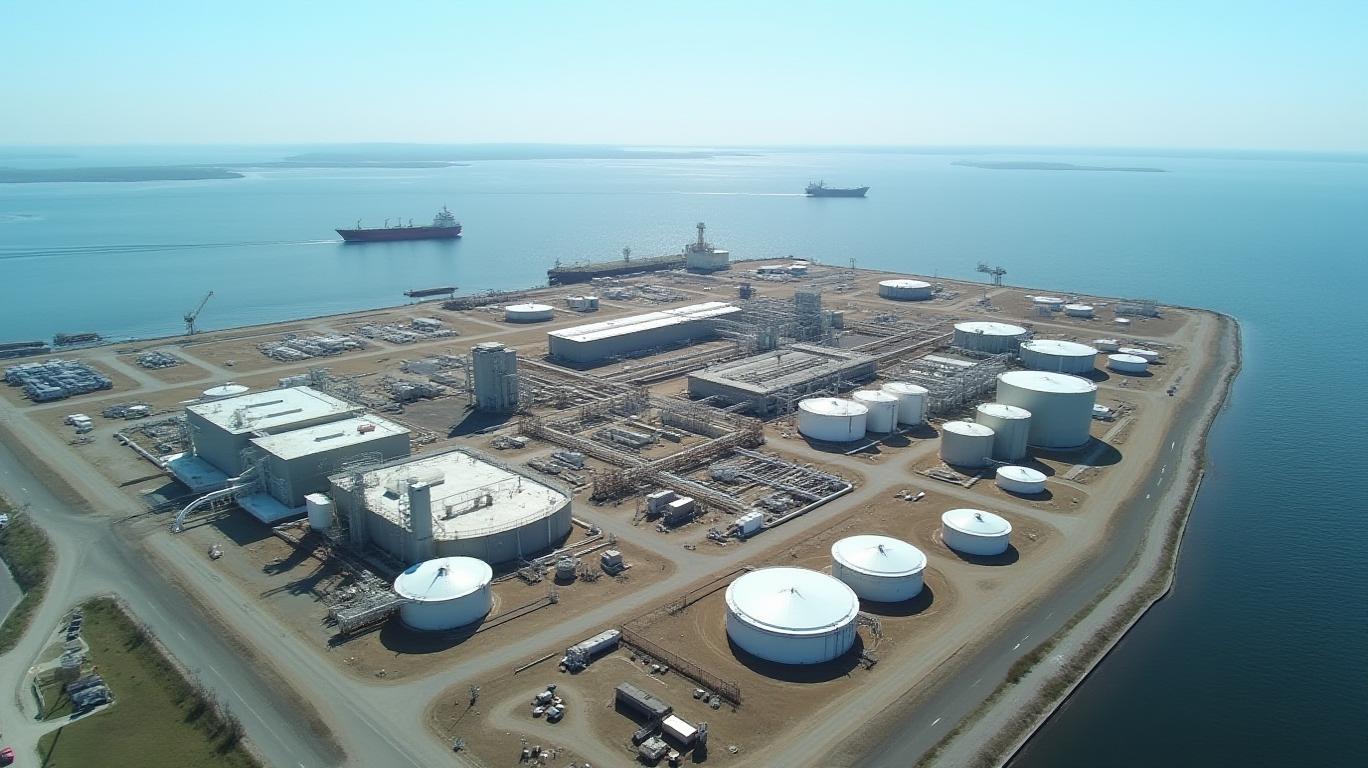Enbridge: Record Quarterly Results, But This Should Be Kept In Perspective
Enbridge Inc. (TSX: ENB, NYSE: ENB) has delivered record financial results for the first quarter of 2025, showcasing robust performance across its core energy infrastructure segments. GAAP earnings surged to $2.3 billion, while adjusted EBITDA rose 18% year-over-year to $5.8 billion, driven by record Mainline pipeline throughput and strategic investments. However, as investors celebrate these figures, it’s crucial to consider the broader context—currency fluctuations, regulatory headwinds, and the sustainability of growth projections.
Ask Aime: "Can Enbridge's record earnings fuel sustainable growth?"

Key Drivers of the Quarter’s Success
The Q1 results were propelled by several strategic advantages:
- Mainline Pipeline Dominance: The Canadian Mainline achieved a record 3.2 million barrels per day (mbpd) throughput, with apportionment maintained throughout the quarter. This system remains vital for transporting Western Canadian Select (WCS) crude to refineries and export terminals.
- Rate Settlements and Acquisitions: Higher gas distribution revenues from colder weather in Ontario and rate hikes, plus contributions from U.S. utility acquisitions (e.g., Enbridge Gas Ohio and Utah), added $835 million to EBITDA.
- Currency Tailwinds: A stronger Canadian dollar against the U.S. dollar boosted earnings from U.S.-denominated assets, though this also increased interest and tax expenses.
Ask Aime: Enbridge's Q1 earnings hit $2.3 billion, driven by Mainline pipeline traffic and strategic investments.
Strategic Investments Fueling Long-Term Growth
Enbridge has committed to a disciplined capital allocation strategy, focusing on low-risk, accretive projects. Key initiatives include:
- Mainline Expansion: Up to $2.0 billion in capital investments through 2028 to enhance reliability and support 1.0 mbpd of incremental WCS production by 2035.
- Gas Transmission Growth: Acquisitions like the Matterhorn Express Pipeline (a $0.3 billion equity stake) and the Traverse Pipeline (a $0.4 billion project) are expanding Permian-to-Gulf Coast capacity.
- Gas Distribution Upgrades: The T15 expansion in North Carolina, with a total cost of $0.7 billion, aims to double natural gas capacity for Duke Energy’s plant by 2028.
These projects have bolstered Enbridge’s secured growth backlog to $28 billion, underpinning its multi-year outlook of 7–9% annual EBITDA growth through 2026 and 5% thereafter.
Risks Lurking Beneath the Surface
While the results are impressive, several factors warrant caution:
1. Currency Volatility
While the stronger Canadian dollar boosted EBITDA, it also inflated interest and tax expenses. A 4.9x debt-to-EBITDA ratio (within the 4.5–5.0x target range) leaves little room for error if the currency swings against Enbridge.
Ask Aime: What's next for Enbridge after record Q1?
2. Regulatory and Geopolitical Risks
- Rate Cases: Filing for higher rates in states like North Carolina and Utah could face pushback from regulators focused on affordability.
- Trade Dynamics: While Enbridge claims tariffs pose no material risk, a prolonged U.S.-Canada trade dispute could disrupt cross-border oil flows.
3. Project Execution and Weather Dependence
- Gas Distribution: Earnings remain tied to seasonal demand and regulatory outcomes, as seen in Q1’s $87 million boost from colder Ontario weather.
- Renewables: The 14% drop in renewables EBITDA due to weaker European wind performance highlights execution risks in new sectors.
4. Debt Management
Enbridge’s debt remains elevated, requiring disciplined capital allocation. The company’s $2.8 billion in senior notes issued in early 2025 underscores its reliance on debt financing to fund growth.
Financial Guidance: Ambitious but Achievable?
Enbridge reaffirmed its 2025 guidance for adjusted EBITDA ($19.4–20.0 billion) and DCF per share ($5.50–5.90), backed by a $9–10 billion annual capital budget. The multi-year outlook assumes steady growth, but investors should scrutinize execution risks:
- The $28 billion backlog relies on timely project completions and stable cash flows.
- The 5% post-2026 growth target hinges on diversifying revenue beyond oil and gas, such as through renewables.
Conclusion: A Mixed Picture of Strength and Caution
Enbridge’s Q1 results are undeniably strong, with record throughput and disciplined capital spending. Its growth backlog and regulatory advocacy suggest resilience in the near term. However, investors must weigh these positives against currency risks, project execution hurdles, and the fragility of renewables performance.
The company’s debt-to-EBITDA ratio (4.9x) is manageable but tight, requiring careful management as it pursues $2 billion in Mainline investments. Meanwhile, the $0.9425 dividend per share—a cornerstone of its investor appeal—depends on maintaining cash flow stability.
While Enbridge remains a critical player in North American energy infrastructure, its success in the coming years will hinge on navigating external headwinds while executing on its backlog. For now, the results justify cautious optimism, but the path to sustained growth is far from straightforward.
John Gapper is a pseudonym for a financial analyst specializing in energy infrastructure and utilities. This analysis reflects independent research and is not financial advice.

_f86da1b01749674376692.jpeg)








